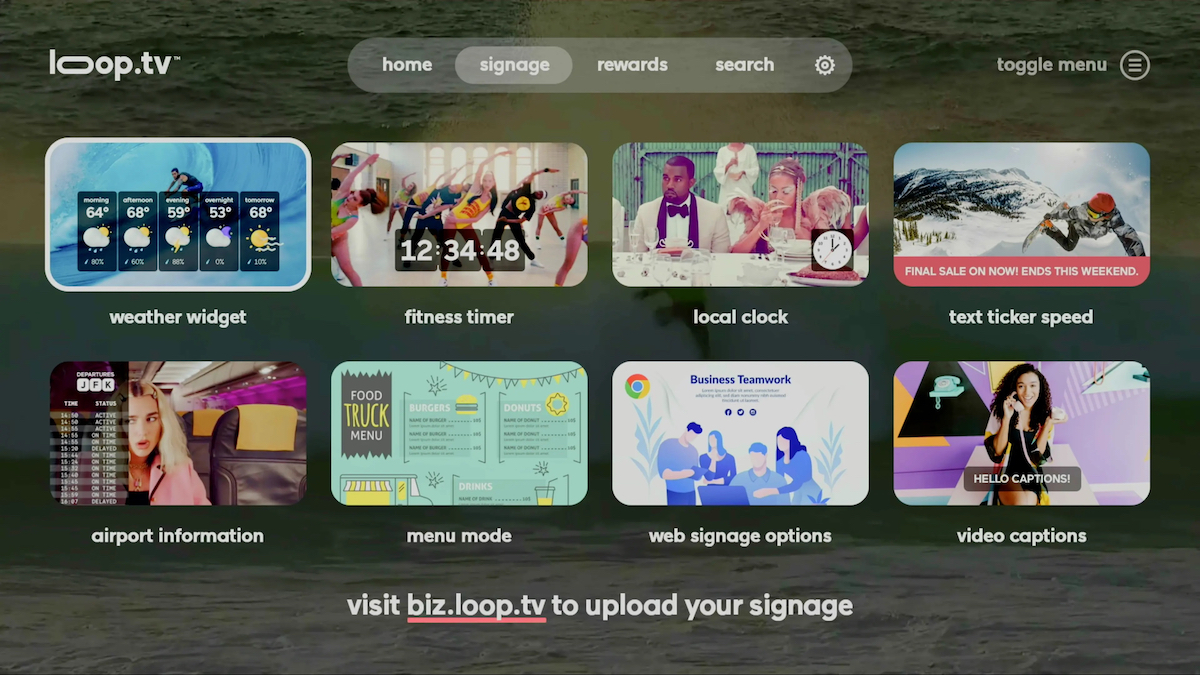
Loop Media Partners With AI Firm On Ad And Content-Filtering “Brand Safety Layer”
July 26, 2023 by Dave Haynes
The DOOH media firm Loop Media – which puts free media players into environments like restaurants and bars – has started working with an AI firm that specializes in speech recognition to filter advertising and keep competitive or objectionable ad spots off screens.
LA-based Loop says its AI-powered “Brand Safety Layer” is being offered to all clients and partners at no additional cost.
From the PR:
Maintaining brand integrity is of paramount importance for venues that operate free ad-supported streaming television channels. Loop Media now offers state-of-the-art ad detection techniques at scale, ensuring businesses are shielded from inappropriate or competitive advertisements.
“Preserving a business’ reputation is paramount,” says Bob Gruters, Chief Revenue Officer of Loop Media. “Traditionally, businesses have not only been burdened with the cost of their television service, but have also been compelled to accept all ads displayed without any control.”
Loop Media’s Brand Safety Layer is a cutting-edge network service that operates seamlessly with any demand-side platform (DSP). Through a partnership with AssemblyAI, Loop Media leverages advanced artificial intelligence models to analyze speech, detect unsuitable content, and identify competitive keywords in advertisements streamed on Loop TV streaming channels.
“Platforms like Loop TV have to process billions of ad requests monthly. Thanks to recent significant advances in AI, Loop TV can now rely on the AI technology AssemblyAI offers, to more effectively and efficiently ensure brand safety and that each advertisement shown on the Loop TV platform aligns with venue brand values,” adds Dylan Fox, Founder & CEO at AssemblyAI.
AssemblyAI says it builds on the latest state-of-the-art AI research to offer production-ready, secure, and scalable AI models for speech recognition, speaker detection, speech summarization, and more.
The assertion that venue operators “have been compelled to accept all ads displayed without any control” is a bit of a leap. Certainly, if a sports bar runs broadcast TV and an ad comes on for the BBQ place across the street, there’s not much to be done about that. But DOOH networks have, almost since inception back in 1990s, had to have their own safeguards and data-driven rules in place not only for ads, but for content. DOOH screens in the Delta terminal at an airport can’t be running Southwest ads.
When I was VP Ops for the old Elevator News Network (now Captivate Canada), we were back in 1999-2001 responding to building owner stipulations about what could and could not be on screens – both with ads and infotainment.
That stated, this behind the scenes, AI-based filtration layer for ads is kind of interesting, and reflects how AI in digital signage is not going to just be about automating or streamlining creative production. A final set of human eyes on an ad spot before it gets distributed across a network is probably always going to be part of the operating mix, especially since speech recognition is not going to pick up a naughty image, but this sort of thing can streamline efforts.



Leave a comment